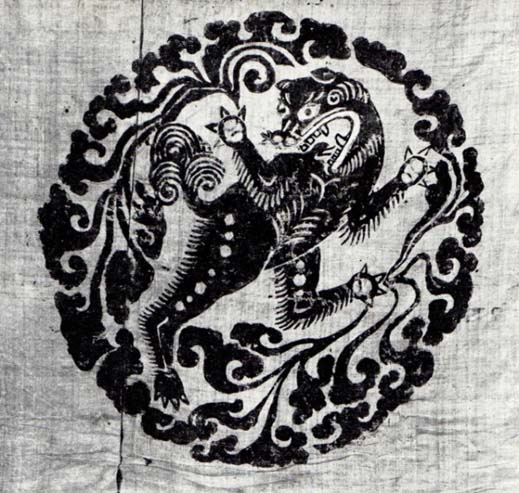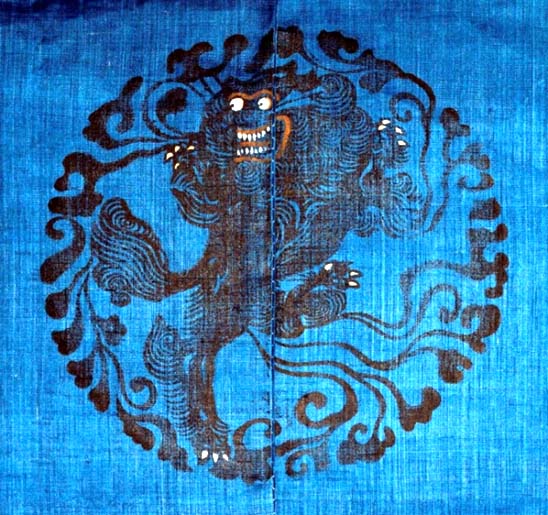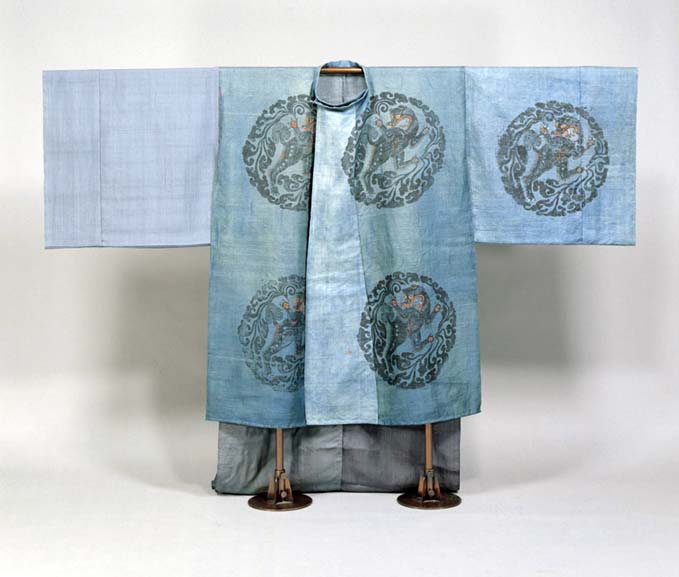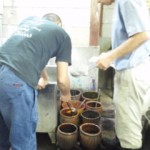Early history of woodblock print dyeing
Reproduced textile called “ban-e”, Collection of Tokyo National Museum
Oldest woodblock print, ban-e, is a technique that started to be employed in the Nara period (710-784). Printing patterns with pigments on solid color garments were widely used to make outer garments for officers. Woodblock printing was one of the major dyeing techniques before katazome (Japanese stencil dyeing) was introduced in the 14th century. As katazome began to be used as a more efficient dyeing method, woodblock print dyeing became less popular and almost died out by the 18th century. In the 1950’s Tetsuo Koyama and his father, Yasuie, were inspired by the beauty of ban-e and started to create kimonos using woodblocks they carved.
Part of restored garment from the Muromachi period, Collection of Tokyo National Museum
Reproduced garment with wood prints, Collection of Tokyo National Museum

Curating an Artist-in-Residence in Tokyo 2
Last fall I curated community-based art exhibitions in Tokyo. They were shows in an Artist-in-Residence program that was sponsored by Ota Ward of ...






Leave a Reply